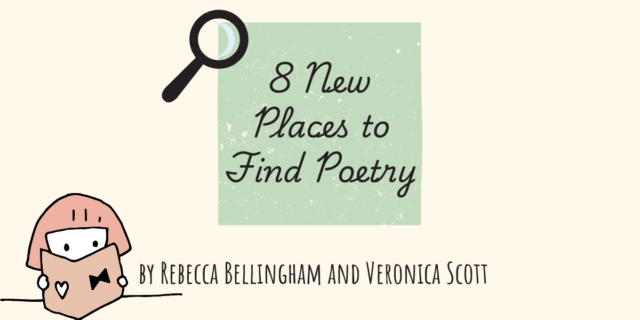
Certain conditions need to be present in the classroom to get our students to rethink their negative perceptions about poetry.
We need to make sure the room is filled with the voices of writers like our students, so they can find themselves, yet also make sure it is filled with the voices of those outside the students’ experiences, so they can see how the world might be so different from their limited lives. Just as in a writing-reading workshop, students can do their best work when given choices, time, mentor texts, and positive responses that keep them growing stronger both intellectually and emotionally.
This is what works best:
- Give kids choices into which poems or poets they read.
- Surround students with poems from both contemporary and classic poets from multicultural backgrounds.
- Help students find poems that connect to their very core, those things that matter most to them.
- Help students find poems that allow them to see the world in ways they don’t usually see the world.
- Provide time to find those poems, time to read them, time to hear them, and time to reflect on the poem through talking, writing, and drawing.
- Ask open-ended questions about the poetry they read:
- What came to mind as you read this poem?
- What did the poem make you think or feel?
- What in the poem made you think or feel that way?
- What did you notice about the way the poem was written?
- What did the poet do that you might try in your own writing?
Elisa New, a professor of American literature at Harvard University and the creator and PBS host of Poetry in America, suggests the following about teaching poetry:
- Choose poems that allow students to tap into their own experience, but also stretch beyond that experience.
- Instead of asking, “What does this poem mean?” ask, “What is the first word that slows you down or stops you? Why? Others?”
- Teach formal technical aspects of a poem only when needed, letting students create a glossary of terms they need to express observations. These technical aspects (jargon) can be overwhelming and alienating. Students don’t need it.
- Give students a chance to build their own experiences with poetry. I also want to remember Amy Clark’s words:
When given the right opportunities to linger with poems they have chosen, students begin to better understand not only themselves and the world at large, but the moves writers make and they begin to work with an intentionality that heightens the quality of their writing in all forms. They find themselves understanding that a dash can be a breath on the page and that dashes are different from parentheses (and they didn’t need a worksheet to tell them this—they just needed a poet applying punctuation meaningfully) . . . . Poetry deserves our attention and not our apologies for its inclusion in our classroom. (Clark 2017)
Repeat after Amy Clark (and me): “Poetry deserves our attention and not our apologies for its inclusion in our classroom.”
 What's inside Whispering in the Wind by Linda Rief
What's inside Whispering in the Wind by Linda Rief
- Learn how Heart Maps can be used as inspiration for reading and teaching poetry
- Instructions for how to introduce and create Heart Books
- Information about how to SAVE TIME by teaching poetry during transition times —all those in-between times throughout the year, such as right before a new unit, and leading up to, or returning from, vacations or holidays.
- Explicit pointers for choosing poets and poems, creating book crates, and reading to find a poem
- Many visual examples of student work for inspiration in creating your own Heart Book
- And much more!


